Cutting California Emissions by 40 Percent: A Blueprint for Climate Leadership
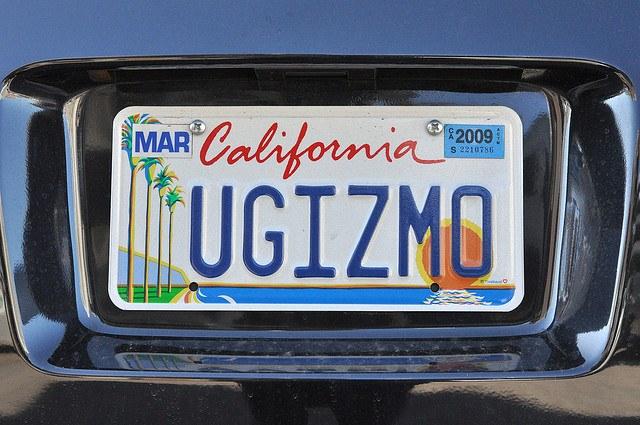

By Chris Busch
California is America’s climate policy leader, home to both the country’s biggest clean energy industry and an internationally-linked carbon market being modeled across the world. To build on this momentum, California must go even further.
California Gov. Jerry Brown’s 2015 State of the State speech set the right tone by outlining 2030 goals for renewable electricity and building energy efficiency, as well as reducing fossil fuel dependence in transportation. But one fundamental decision remains: What should California’s carbon emissions cap be after 2020?
Energy Innovation recently proposed a cap of 40 percent below 1990 level emissions by 2030 to support the push for international commitments leading up to this year’s COP21 climate conference in Paris. This target and the proposal for how to get there will empower California to keep leading America’s clean energy transition through continued demonstration of the environmental and economic benefits.
Proposed design for cap-and-trade’s continuation
Reducing emissions by 40 percent below 1990 levels is an ambitious yet achievable goal; it would get California halfway to its 2050 target in a third of the time.
In addition to recommending this 2030 target, Energy Innovation’s report outlines a roadmap to get there through a cap-and-trade design building on California’s current program. The value of using the cap-and-trade program as a capstone policy is that it: provides an economy-wide ceiling (or cap) on emissions that declines over time; generates revenue to ensure a fair transition and to help fund low-carbon investments; and introduces flexibility mechanisms that will ensure costs are manageable.
Figure 1 shows how the proposed cap-and-trade program puts California on track to reach its recommended 2030 emissions target. The proposed design of the program contains costs through a reserve mechanism that would be filled by setting aside allowances initially and would allow for future borrowing if this initial allotment was ever depleted.
If allowance prices rise to certain levels, the California Air Resources Board would make these reserve allowances available at auction. If prices stay low and reserve allowances are never tapped, statewide emissions would fall 44 percent below 1990 levels. If prices rise high enough, released reserve allowances would accommodate higher emissions. Despite this potential for annual variation, cumulative emissions would still have a fixed limit equal to the sum of all the annual caps over the life of the extended program.
California in the larger climate context
Rising emissions and a sense of inertia have often paralyzed international negotiations, but two critical developments are changing long-held climate policy assumptions – with California at the center.
First, increasing evidence shows the feasibility of decoupling economic growth and carbon emissions. In California, emissions have declined 6 percent (comparing 2007 emissions to the most recent data, 2012) while the state’s economy has expanded 9 percent since AB 32 passed in 2006. This is part of an accumulation of evidence that environmental protection and economic expansion can be achieved at the same time. OECD countries’ economies grew nearly 7 percent while their emissions fell 4 percent over the past five years, and last year global emissions from energy use remained flat while economic output increased 3 percent.
Second, the recent U.S.-China climate accord calling for the U.S. to reduce emissions 26 to 28 percent below 2005 levels by 2025 and for China to peak emissions on or around 2030, has completely changed the model for how international progress can take place. A seemingly unsolvable standoff previously existed between developed and developing countries, but nations are now embarking on increasingly ambitious climate mitigation efforts, in large part because of their domestic benefits.
This is certainly true in China, which is looking closely at California’s experience in trying to clean up its own notorious air pollution. For instance, Chinese officials want to know how policymakers greatly improved air quality in Los Angeles, home to some of the world’s worst air pollution in the 1960s. Gov. Brown visited China in 2013, and the state has provided technical cooperation to Chinese authorities seeking to expand renewables and set up a national carbon market.
Maintaining California’s climate leadership
California deserves a slice of the credit for this moment of opportunity in efforts to solve the global climate crisis. In addition to its recent cooperation with China, the state’s outreach has extended to Mexico, Brazil and Canada.
California is not alone in advancing clean energy in America — 29 other states plus Washington, D.C. have also adopted mandatory renewable portfolio standards — but smart policies originating in California have often spread to other states:
- California was the first to set building and appliance efficiency standards that are now widely used across the country and around the world.
- In 2002, California pushed forward with tailpipe greenhouse gas regulations, which eventually spurred the foundation of federal efforts to increase vehicle fuel economy.
- A policy analogous to state’s Low Carbon Fuel Standard has been adopted in Oregon, while states such as Washington are considering adopting similar policies.
Within our borders, across the nation, and around the world, California needs to remain a clean energy leader. Beyond cap-and-trade as a capstone policy, Energy Innovation recommends the state continue using a portfolio of sector-specific policies to ensure steady reductions across a broad array of energy and technology categories. With the right policy steps, a safe climate future is within reach for California and the world.
Image credits: 1) Flickr/Lisa Padilla 2) Energy Innovation
Chris Busch is the Director of Research at Energy Innovation, where he leads the company’s work on Urban Sustainability. Prior to joining Energy Innovation, Chris served as a Climate Economist with the Union of Concerned Scientists, Policy Director for the Center for Resource Solutions, Policy Director for the BlueGreen Alliance, and Senior Research Associate at Lawrence Berkeley National Laboratory. His work in California has helped shape the design of the state’s cap-and-trade program. In 2009, the California Air Resources Board appointed him to the AB 32 Economic and Technology Advancement Advisory Committee. Chris holds a Ph.D. in environmental economics and a master’s degree in public policy, both from the University of California, Berkeley. He received a B.A. in economics and history with honors from the University of Pennsylvania.
3 Easy Steps to Bust Computer Clutter


By Rick Talavera
One of the most oft-overlooked tenets of the Information Age is making sure that information is easily accessible to people who need it most. Employees waste an estimated 15 to 25 percent of their time at work trying to locate information they need to do their job -- that equates to roughly six weeks of work. In our ever-evolving economy productivity is key, and wasting time trying to sort through computer clutter can push deadlines, create duplicate work and ultimately cost an employer money.
Not only is keeping your computer clean integral to maintaining peak productivity as an employee, it’s also key in ensuring that your computer can run at its most efficient, so you can focus your time and efforts on more pressing tasks.
We at SingleHop have come up with a three-week system to help bust any existing clutter on your computer and archive any files that may not be in use. This week-by-week process should freshen up your desktop in time for spring and jump-start your good organizational habits:
Week 1: Blueprint and organize
Map out and assign a folder organization structure onto your desktop that works for you based on how you use your computer. Are you a search-and-find fiend? Try organizing your folders into broad categories by topic so you know which folders to search through. Do you need access to certain files immediately, or share access to your files with other people? Try organizing your folder structure by date so they’re easier for you (or someone else) to browse. The key is to map your folders based on your needs - this will help ensure that you’ll continue to use this system in the future and prevent new clutter from forming.
Once you’ve got your folders set up, take all of your files -- and I mean all of them -- and organize them into your folder system. Start with your desktop and any items in your “downloads” folder, then work up to multimedia folders with photos, videos and documents in them.
Week 2: Prioritize the important stuff
So now that all of your files are sorted into their appropriate folders, the next step is to organize them by priority. Review your files folder-by-folder and place them into one of these three categories:
- Important: These files are documents that you access on a daily basis and will need to be stored onto your hard drive. Integral documents -- like proposals, current projects or programs currently in use can be flagged as important. Keep these folders on your hard drive, since you’ll need them to conduct day-to-day business.
- Archived: Archived files are files that are important to you but are not frequently accessed. Old photos, videos and past projects can all be archived and pulled up at a later date if they’re needed. Move anything archivable into a separate ‘Archived’ folder for now -- we’ll dive into where to put these permanently in a second.
- Delete: These are files that you won’t need again. Throw those files into a “delete” folder.
Week 3: Back up and delete
Take the files you placed in your “delete” folder and toss them in the recycling bin. That was easy, wasn’t it?
Remember how I said earlier that we’d get into what to do with your archived files? Let’s dive into digital archiving a bit:
Archived files have a tendency to get ‘lost’ easily -- either they become lost if your current computer crashes or they’re backed up onto an external hard drive that becomes physically lost or malfunctions after years of inactivity.
Because of this, our suggestion is to back up archived files in two separate formats -- one physical via an external hard drive and one digital. Many cloud hosting services will offer a hosted private cloud that will allow you to store your archived files and access them at any time. This not only safely stores your documents in a digital location, but also keeps your files conveniently available to you should you need to access them away from your work computer.
Once you’ve backed up your archived files both onto a cloud server and on an external hard drive, go ahead and toss the ‘archived’ folder on your computer to the recycling bin. This will free up extra memory on your computer and allow it to run faster.
And that’s it! Now that the extra bloat on your computer is gone, the last step is to keep with it, so new clutter doesn’t form. Make sure all new documents have a permanent home within your new folder structure so they don’t get lost in a document dead-zone. Assess your files every 2-3 months and re-archive anything you’re not immediately using. Remember, good habits take around 21 days to form, so the longer you stick with it, the easier it’ll become.
Image credits: 1) Flickr/bluepics 2) SingleHop
Rick Talavera is the VP of Engineering at SingleHop and the former CEO of eServer Space, Inc. At his time at eServer Space, Rick successfully led a team of software developers that supplied infrastructure and software optimizations for high traffic websites.
You can find Rick on Google+.
3p Weekend: 5 Cities and States That Are Ending Homelessness
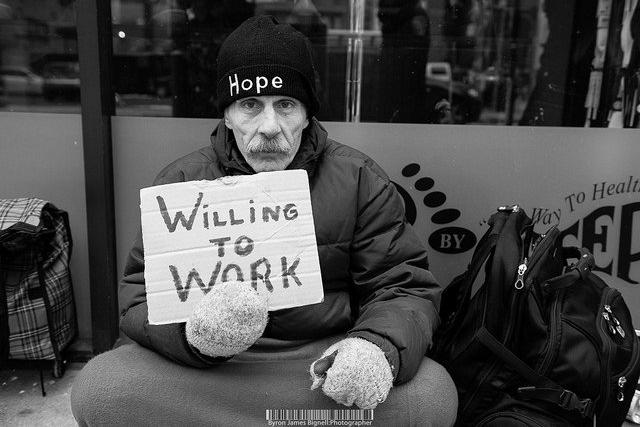

Homelessness is a heartbreaking problem that plagues every city and state in the country. Although study after study has shown that it costs states and cities more money to leave homeless people on the street than it does to give them a place to stay, few localities have done anything with this data. But a select few are leading the charge and showing that it is indeed possible to end homelessness.
1. Utah
Utah is on track to become the first state in the nation to eradicate homelessness. The entire state has fewer than 300 homeless people and will likely eliminate chronic homelessness by the end of the year, a housing expert told Mother Jones. (Chronic homelessness is defined as a person with a disabling condition who has been homeless for more than a year or has had four episodes of being homeless in the past three years.)
The state accomplished this feat by — guess what? — giving people homes. Rather than first getting homeless people "ready" for housing by putting them in shelters, rehabs or halfway houses, Utah was the first state to give the "Housing First" approach a fair chance. And it saved local governments money: The average chronically homeless person used to cost Salt Lake City more than $20,000 a year, Lloyd Pendleton, the director of Utah’s Homeless Task Force, told the New Yorker. Putting someone into permanent housing costs the state just $8,000.
"If you move people into permanent supportive housing first, and then give them help, it seems to work better,” Nan Roman, the president and CEO of the National Alliance for Homelessness, told the New Yorker. “It’s intuitive, in a way. People do better when they have stability.”
2. New Orleans
New Orleans is on its way to becoming one of the first U.S. cities to eliminate chronic homelessness, and it may do so by the 10th anniversary of Hurricane Katrina later this year, the head of a local homeless advocacy group told NOLA.com.
Unity of Greater New Orleans and its coalition of homeless advocacy groups have already reduced the number of chronically homeless people in the city from 4,579 in 2009 to only 677 last year. Overall homelessness is also down in the city: The total number of homeless people sleeping at local shelters on a given night in January 2013 was 2,337 compared to 11,660 in 2007, representing an 80 percent decrease, NOLA.com reported.
3. Phoenix
The Barack Obama administration set a goal of ending homelessness among veterans by 2015, and Phoenix was the first city to answer the call. In late 2013, the city announced it had found homes for all of its chronically homeless veterans using the Housing First approach.
Although this is certainly cause for celebration, Arizona would do well to apply the Housing First approach to its overall homeless population, which is still painfully high: One in every 230 Arizonans (over 28,000 individuals) experienced homelessness in 2012, according to the Phoenix Rescue Mission.
4. Austin, Texas
Austin, Texas, provides housing for hundreds of chronically homeless residents in a 27-acre tiny house community called Community First Village. The "Tiny House Movement" is being tested as a solution to homelessness across the country, from Austin and Utah to Rochester, New York. But Austin is the first city to get their plans off the ground, after nearly 10 years in the making.
“This is a plan that could revolutionize the housing movement in the United States,” Alan Graham told NBC News. The Texas activist says his self-founded organization, Community First, has already lifted 100 homeless people off the streets. “The city of Austin loves us,” he said. “They think we’re on the verge of breaking the code.”
5. Nashville, Tennessee
After engaging with the 100,000 Homes Campaign — an initiative launched four years ago to help communities place 100,000 chronically homeless people into permanent housing — Nashville is making significant strides toward ending chronic homelessness.
In 2013, the city launched How’s Nashville, a concerted effort to end chronic homelessness by the end of the decade. Previously, the city placed an average of 19 homeless people in permanent housing each month. Today, it’s housing an average of 47 per month, Will Connelly, who directs the city’s Metropolitan Homelessness Commission, told the New York Times. Since last June, the city has placed more than 500 chronically homeless people in permanent supportive housing, Connelly said.
Image credit: Flickr/Byron
Sustainability Is Not a Club
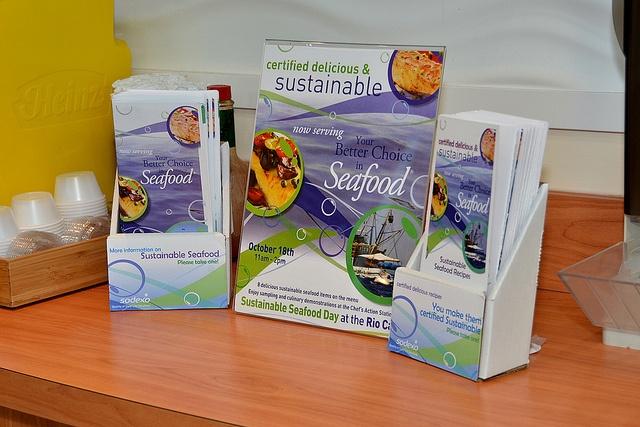

Editor's Note: This post is an entry in the 5th Annual iPura Tweet & Blogfest at Seafood Expo 2015. It originally appeared on the Good Catch blog. Read all of the Blogfest entries here.
By Ret Talbot
Those in the seafood industry furthest along the path to sustainability must never become the elite. Sustainability is not a club one joins. It is not an award one wins or a crown one wears. Sustainability must be nothing more and nothing less than a best practice.
It’s easy to see why those companies “certified as sustainable” may be viewed as the elite. It’s estimated that only around 10 percent of global wild-caught seafood comes from fisheries engaged with the largest, most well-recognized certification scheme — the Marine Stewardship Council (MSC).
“If you look at MSC certifications, the likelihood is that it’s going to deal with fairly large commercial fisheries in international trade where there are stock assessments,” Dr. Bill Fox, World Wildlife Fund (WWF) Vice President for fisheries conservation, said during a panel discussion at Seafood Expo North America (SENA15). As Fox pointed out, that’s only about 20 percent of wild fisheries that have a realistic shot at an MSC certification at present. What about the other 80 percent? And what about global aquaculture, where sustainability questions persist globally despite a preponderance of science showing that sustainable aquaculture is not only possible, but is also essential to the future of the seafood industry?
When sustainability is viewed as an endpoint — a door through which one passes into the clubhouse — then the seafood industry potentially does itself a great disservice. Giving elevated status to the few at the top often means the majority will never make it inside. This is why the most forward-thinking companies furthest along the path to sustainability may choose not to enter the clubhouse at all. “Claiming 98 or 99 percent sustainability is about ego,” Michael Tlusty, director of research for th New England Aquarium, said during a SENA15 panel entitled The Changing Landscape of Sustainable Seafood. “If you start making too much progress,” Tlusty said, “you need to set a more rigorous [standard].”
This isn’t to say that we shouldn’t have certification, verification and assurance schemes in the seafood industry. In fact, such programs are essential to moving the dial in the right direction. It is, in large part, thanks to such programs that we are where we are today — that we’re even having this discussion. Consumer-facing certifications have elevated the dialogue in the public sphere (although we still have a lot of work to do in this regard), and internal certifications have helped business-to-business interactions. The important thing to remember, however, is that when you deal exclusively with the tiny percentage of the industry that is certified sustainable, you potentially further marginalize the vast majority.
In his panel discussion, Tlusty talked about how we use certification to help move the industry along the path toward greater sustainability without alienating the majority of seafood businesses that have not received the gold star. “We are a global sourcing food system,” Tlusty said. “If you say we’re going to cherry-pick all the best producers … there’s likely to be a lot of egregious occurrences happening, and that product is just going to be shifted elsewhere.” Instead, Tlusty suggested, we need to stay engaged with the entire industry. “Just cherry-picking off the best is going to make your company look good,” he said, “but for the entire food system, it’s actually going to do it a disservice.”
The leaders of the seafood industry need to avoid wearing sustainability blinders. Yes, we need to shine a light on those who are doing it well insofar as sustainability is concerned, but, more importantly, we must not allow those in our peripheral vision to fall out of focus. Reward those who have worked hard to achieve certification, but also engage with those who have not. Certification is a tool; use it as such.
I made the observation on Twitter last month that as the word sustainability proliferates on the exhibit floor at SENA15, the Sustainable Fisheries conference track occurring concurrent with the show seems to be distancing itself somewhat from the word. How many times did I hear in panel discussions this year something like, “I don’t really like the ‘S’ word”?
I think we’re seeing an evolution here that goes beyond vocabulary. I think perhaps we’re coming to appreciate that sustainability is nothing more or nothing less than a best practice.
That is something I think we all should celebrate.
Image credit: Flickr/Sodexo USA
Ret Talbot is an award-winning freelance science writer and photojournalist with nearly 20 years of experience covering stories from some of the more remote corners of the globe. From the icy summits of the Andes to the reefs of Papua New Guinea, his assignments have taken him off the beaten track and put his readers face-to-face with stories of adventure, new ideas and innovative approaches to commonplace issues. His current work focuses on the intersection of fisheries, science and sustainability.
Lowe’s to Stop Using Bee-Killing Pesticides
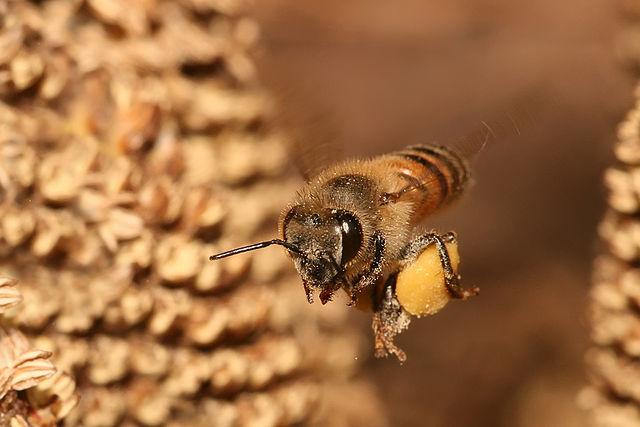

Shareholder activism made a difference again with yesterday’s announcement that Lowe’s will phase out the sale of neonicotinoid pesticides. Also referred to as “neonics,” environmental watchdog groups said these chemicals have been a leading contributor to “colony collapse disorder.” As the populations of bees have declined worldwide, these chemicals are often still sprayed on nursery plants, and are also in pesticides sold on store shelves. According to a Friends of the Earth report published in 2014, over half of the garden plants purchased in 18 North American cities at Lowe’s, Home Depot and Walmart contained neonicotinoids at levels strong enough to harm or kill bees. Many of these plants were even labeled “bee friendly.”
To that end, Lowe’s has committed to phasing out of all products containing neonicotinoids by the spring of 2019. Of course, a complete elimination of neonicotinoids will require some regulatory changes: some states require the application of neonicotinoids on certain plants and gardening supplies. In addition to finding more suitable materials than the neonicotinoids, Lowe’s will implement an education program informing customers about bees and other pollinators. The company will also provide grants to fund pollinator gardens through its philanthropic and employee volunteer programs.
The shift in Lowe’s policy is the result of a two year campaign led by Friends of the Earth, Domini Social Investments and Trillium Asset Management. The three organizations worked with the Investor Environmental Health Network to approach retailers and food companies about the environmental risks neonicotinoids posed to the environment—and the resulting long-term threat to these companies’ business and long-term viability. In the case of Lowe’s, Domini and Trillium were making progress with the company, but then decided to submit a shareholder proposal in November 2014 to reinforce the urgency of this ongoing problem. Lowe’s then decided to make these new commitments, and in return the investor groups withdrew the shareholder announcement.
To some who are passionate about this issue, waiting four years until these products are phased out at Lowe’s may not seem fast enough. But considering these companies’ complex relationships with their suppliers, this is the reality, and Lowe’s move could nudge its competitors to follow the retailer’s lead. "Investors dislike uncertainty. So despite the seemingly long four year phase out, Lowe's time-bound public-facing commitment to restrict neonics’ use by Spring 2019 gives investors important clarity around its risk profile--both reputational and regulatory--concerning pesticide use reduction and specifically, exposure to bee toxic pesticides,” said Susan Baker, a Vice President of Trillium Asset Management. “By setting clear commitments and a target date, Lowe's is in essence committing to an environmentally preferable purchase program. Suppliers of live goods will have to comply unless exempt by state regulations. This precautionary approach lends itself to meaningful risk mitigation, in our view, and will benefit Lowe's customers, shareholders, the environment and our economy.”
As they say in business school, being a first mover could be an advantage for Lowe’s in terms of customer trust and brand loyalty, especially since more consumers have become aware of the global threat to bees and the havoc it could wreak on the global food supply. “Lowe’s is the second largest home improvement retailer in the world and it is the largest garden retailer to make time bound, public commitments to phase out neonics. We believe this will have a ripple effect throughout the entire industry to move plants and products in a direction that will be truly safe for bees and other pollinators,” said Tiffany Finck-Haynes, Food Futures Campaigner for Friends of the Earth. “An important aspect of Lowe’s program is its commitment to take a more comprehensive approach to tracking pesticide use on its live goods. We do not know of another non-food publicly traded retailer that has made such a commitment.”
North American companies are lagging on this problem when compared to what has occurred in Europe, where these chemicals have largely been restricted for over 15 years. Friends of the Earth has accused the leading neonicotinoid companies of hiding behind public relations spin while leading consumers to believe they are actually on the forefront of saving the global bee population. Yesterday’s announcement my Lowe’s should change the dialogue on this issue, and spur the company’s competitors to change their tune as well. Image credit: Muhammad Mahdi Karim
Recycling Technology Keeps Sustainable Fashion in the Loop


Swedish retail giant H&M is teaming up with Puma to trial an innovative new textile-to textile recycling technology. Although the technology is still in test mode, it is expected to be ready for commercial use in a couple of years, the companies said.
Both H&M and the luxury brand group Kering, Puma's parent company, are known for incorporating sustainability into their business commitment and product lines. It's only natural they're in pursuit of new ways to build a stronger sustainable identity. The mainframe for this next step could be to turn clothes made from sustainable cotton into collections made from recycled cotton. This would help move the companies' practices away from the linear economy and toward a perpetual circular economy.
Worn Again, the creator of the technology, is a U.K.-based innovative company founded in 2005 by Cyndi Rhoades. It started out by upcycling textile waste to create new products with a higher quality. Two years later, the company made a shift toward business-to-business consultancy, focusing on limiting waste to zero and manufacturing groundbreaking products.
The tests for this new technology, which will be monitored by H&M and Puma, are built around separating and extracting polyester and cotton from blended fiber clothing. Another task will be to separate dyes and other particles from polyester and cellulose, which has always been a challenge when recycling. The raw materials that are recaptured can then be used to spin new fabric for clothes. This circular process will have an extremely positive effect on bringing down the need for virgin resources and as such reduces carbon emissions, as well as the use of toxic pesticides, chemical fertilizers or exhaustion of land for growing crops.
Worn Again isn't the first to develop a textile-to-textile technology. In 2014, Swedish scientists developed a process to recycle cotton by shredding clothes to pulp and turning the substance into threads of viscose. The company responsible for making the pulp is now preparing its first fabric-recycling factory and teaming up with several entrepreneurs in the textile industry.
In 2012, Dutch fashion designer and sustainable entrepreneur Rien Otto founded his Dutch aWEARness company. It's built on the principles of the circular economy and supported by the European Commission. In an Eco Innovation program for a specific pilot project, Otto uses 100 percent recyclable polyester-based fabric. The company makes work clothing, corporate wear and fashion.
Otto knows all about the new H&M, Puma and Worn Again collaboration, for in this line of business, companies all learn from their colleagues and support each effort made:
"Happens so, I talked to them the other day about their new blend technology," Otto said. "They're really excited about it. Even if the results are confined to the lab environment for now, it will be used for their clothing some day. We need every avenue possible to increase and stimulate the growth of sustainability and recycling in the fashion and textile world. Each attempt is a step forward."
H&M collected 7,684 tons of used clothing in 2014 via its Garment Collecting initiative, which was launched to reduce textile waste. For more TriplePundit articles on H&M and news about sustainable clothing, click here.
Image credit: Flickr - Brian
Transportation Planning, Liquid Asphalt and the Road Ahead


By Michael Aper
Most Americans begin every workday with a car commute. On the drive, America’s roadways and the omnipresent automotive industry are some of her most noticeable features. Embedded in the asphalt and forged in the steel lays the nation’s ethos of hard work and productivity. Transportation infrastructure: the people’s champion.
Every American can recall fond memories created on a neighborhood street, a dirt back-road or an open highway. Since their inception, from Ford’s Model T to the Interstate Highway System to the MAP-21 bill, roads and automobiles have always been about the people.
In the midst of smog, decaying transportation infrastructure and increased maintenance demands, it seems that the golden age of roads and automobiles is largely a thing of the past.
Yet, with the emergence of new technology and changing attitudes, a beacon of hope glows faintly in the distance -- illuminated by progressive policy making. Moving Ahead for Progress in the 21st Century (MAP-21) was signed into law by President Barack Obama in 2012. MAP-21 is a $105 billion long-term highway authorization act aimed at funding performance-based surface transportation programs. In lieu of the funding, Americans must collectively ask themselves: Are we making the right policy decisions to leverage our investment?
In 2013, 137 million barrels of petroleum, or about 2 percent of all petroleum consumed in the U.S., were used for asphalt and road oil. That same year, Americans used an additional 3.17 billion barrels of petroleum for gasoline.
2008 heralded an important message for America when Washington, Wyoming and Utah all experienced shortages in liquid asphalt that affected miles of road maintenance, jeopardizing public safety. The message: The world economy is growing and, with it, the foreign demand for liquid asphalt. Too much capital is vested in American transportation infrastructure for the automotive market to be hinged upon one non-renewable resource. Especially since the production and combustion of petroleum derivatives creates pollution which contributes to adverse climate conditions accelerating the deterioration of the very infrastructure that the entire system depends on. The situation stands as a seemingly unsolvable conundrum. Public and private stakeholders are none-the-less taking on the challenge. And as America opens her eyes in this dark 21st century tunnel, it seems that she just might make it to the light.
Tesla Motors delivered more than 10,000 electric cars in the first quarter of 2015. The company will have to deliver an addition 15,000 in each of the successive quarters this year to meet its goals. Last month, Tesla CEO Elon Musk announced that the company will reveal a new, non-vehicle product on April 30.
The Golden State is also anticipating about 50 hydrogen fueling stations by next year to accommodate Honda, Toyota and Hyundai’s push toward fuel cell vehicles. Down in Louisiana, another American company, Sundrop Fuels, is working to create a 15,000-barrel-per-day biogasoline plant. The company expects directly competitive biofuel, fully compatible with contemporary engines, priced at about $2 per gallon once the process is fully commercialized. In the Midwest, Avello Bioenergy is evaluating the potential for bioasphalt binder to store bio-based carbon in asphalt pavements and roofing materials.
Yes, pursuing sustainable solutions to today’s climate conundrum is about the environment, but the underlying motive is about collective efficiency and people: making society prosper using the best knowledge and resources available. In the case of American roadways and automobiles, alternative fuels and alternative fuel-based vehicles are beneficial to the environment, yes, but they can also contribute to more resilient transportation infrastructure by lessening the nation’s demand for gasoline as the global economy grows and the pull of China and India increase.
While Honda, Toyota and Hyundai all chase fuel cell technology and the hydrogen economy, Audi is developing e-fuel that is created by synthetically engineered bacteria. After being exposed to sunlight, the bacteria inhale carbon dioxide and hydrogen and secrete fuel. Audi, in partnership with Joule Unlimited, is currently piloting a project in New Mexico to scale up e-fuel production. In Werlte, Germany the company’s industrial-scale power-to-gas plant produces synthetic methane after a two-part process, which significantly reduces its emissions during vehicle manufacturing. In fact, the company reports that production of its A3 Sportback model offsets exactly as much CO2 as the vehicle will later emit during motorized operation.
American policy decisions, often times, don’t reflect an understanding of climate change or the best available knowledge and resources. Policies, like the five-state ban on direct manufacturer sales for Tesla’s vehicles, need to be evaluated with the bigger picture in mind. On closer evaluation, Americans may find that certain policies restrict the market mechanisms crucial for successful climate change mitigation and in doing so pass-up key opportunities presently available -- all the while consuming more and more precious petroleum.
After revoking a $5,000 tax credit that helped grow the electric vehicle market in Georgia, state legislators are now adding a $200 per year fee for EV owners to offset the loss of gasoline taxes that they would have otherwise had to pay for road maintenance. It’s important to find the middle-ground in policy decisions so that the alternative-fuels vehicle market can steadily reach maturity, rather than experience surges and lulls due to erratic legislation.
Automobiles and roadways are no longer inextricably linked to petroleum, but they are still, and always will be, linked to the people. It’s not that the golden age of automobiles and roadways is a thing of the past. It’s that petroleum is starting down a long road toward being less dominant. Failure to separate the two -- and collectively find balance in our policy decisions -- means that we have forgotten not only the merit of innovation and the principles of capitalism, but also who the automobile industry and transportation infrastructure serve: the people.
Image credit: Michael Aper
Michael Aper served as a combat Infantryman in the United States Army from 2007 to 2010. During his time in service he deployed to South Korea and Afghanistan. As a member of the 4th Infantry Division, his unit was one of the first to deploy during the troop surge of 2009. During the deployment, his unit conducted route clearance operations and worked alongside Afghan Nationals to improve the local economy in a remote area outside of Kandahar. Upon returning in 2010, he was honorably discharged and began college at Northern Arizona University. In 2013, he graduated Cum Laude with a Bachelor’s in Community Development and Sustainability. Today, he is pursuing his Master of Arts in Sustainability at Wake Forest University, class of 2015.
How to Pilot an International Corporate Volunteering Program
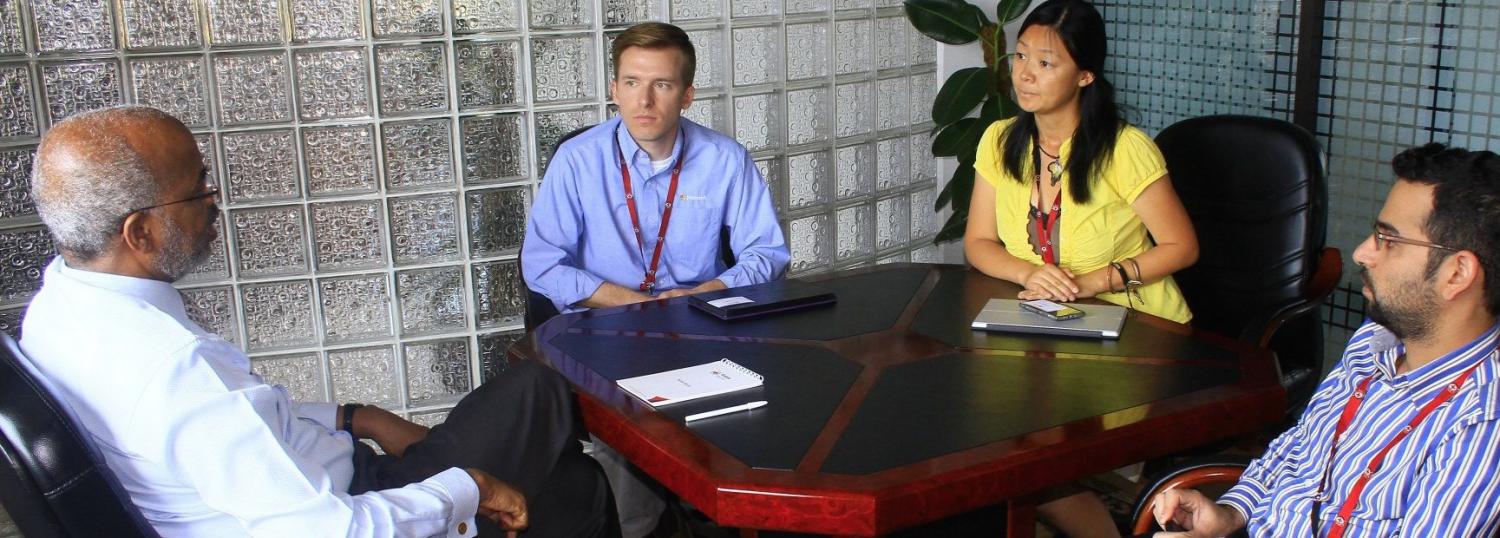

By Mark Horoszowski
As evidenced by the 2015 World Economic Forum in Davos, Switzerland, 2015 is shaping up to be a year of increased corporate involvement in global development initiatives. This year, you can also expect increased spending for leadership development by corporations that are striving to develop more globally-minded leaders, primarily through experiential learning opportunities.
In these two facts sit a wonderful match, which I wrote about in a previous article entitled Why Every Company Needs an International Corporate Volunteering Program: The world needs talented people to donate their expertise and corporations have skilled professionals that can grow as leaders by volunteering their skills.
While existing international corporate volunteering (ICV) programs, like Pfizer’s Global Health Fellows Program, IBM’s Corporate Service Corps, Intel’s Education Service Corp, SAP’s Social Sabbatical and Microsoft’s MySkills4Afrika Program are the most frequently cited, your company doesn’t need something as far-reaching or broad, at least to start with.
Here are seven tips to get a skills-based volunteering program started at your company:
1. Find a corporate initiative to support
ICV programs are proven to deliver recruiting, retention, engagement, and leadership development benefits to corporations. While your company likely cares about all of these, in order to sell this program internally, you’ll have the best chance if you can focus on a specific issue, and then articulate how an ICV program will deliver measurable progress against it.
A good example of this is how Microsoft’s MySkills4Afrika has aligned its program to help develop global leaders – a need articulated by the company’s executive team. In addition, it is responding to needs of its partners and customers by helping build world-class skills and increasing innovation and affordable technology access on the African continent.
This checklist provides some useful tips how to do this within your own company.
2. Recruit a sponsor
While it is possible for ICV programs to be designed and managed from a grassroots level, it helps to find a senior sponsor. Senior sponsors are not only critical for fiscal support, but they can also help with other necessary tasks, like:
- Promoting the program internally
- Partnering with HR for legal considerations and measurement
- Connecting to and aligning with existing CSR initiatives
- Engaging managers to support the program (or at least not block participation)
3. Design your program
While there are about 40 well-documented ICV programs, they vary greatly. As an example, IBM’s Global Service Corp, while massive in reach with 500 volunteers a year, is focused on engaging Director level employees in very strategic, system-level challenges, like this transportation project in Valparaiso, Chile, done in partnership with the local government. Other programs, like Microsoft’s MySkills4Afrika, are open to people of all levels and skills sets across the company and aim to support much smaller, in-the-field organizations including independent schools, nonprofits, and startups - like this program management training at an innovation HUB in Nairobi, Kenya.
Some programs are limited on time, ranging from two weeks to a year. Others are limited by level, where only senior level employees are accepted. Regardless of your company, you can design a program that fits any skill level, time period, and budget.
At MovingWorlds, we have found that for the price of sending someone to a conference, you can connect them to a once-in-lifetime development experience that benefits people, planet, and your company’s profits.
Use published case-studies and open-sourced resources to help get you started researching the feasibility of a program at your company.
4. Identify strategic industry partners
ICV programs are proven to positively impact employees who engage in them. But in order to ensure they create a positive and sustainable impact for the world, they must be built in partnership with organizations that can truly benefit from skilled volunteers. It is therefore essential that great care is taken to find implementation partners, like MovingWorlds, Pyxera Global and VSO, that can make sure that field organizations are identified that:
- Have legitimate, locally-led projects with identifiable social impact
- Have identified clearly scoped projects that pertain to specific skills sets
- Have been trained on best-practices for receiving skilled volunteers
- Agree to program participation requirements, including required planning, reporting, and follow-up
- Meet required corporate security standards, and in some cases, legal and/or financial independence issues
- Have a good chance of sustaining without ongoing support to ensure long-term impact
“Engage purposefully in the global pro bono relationship. When you’re starting a new project, you’re striving for transformative outcomes for these participants and the local clients. Working with an intermediary and / or strategic partners on the ground who understand the landscape – everything from identifying the right NGO with the capabilities and resources to host your volunteers to physically getting around in an unfamiliar environment and culture – is absolutely critical to creating a successful program that’s repeatable,” said Amanda MacArthur, VP of global pro bono and engagement for Pyxera GlobalHere are eight factors to consider when finding matches for international, skills-based volunteers, as published on Devex as part of the #DoingMore campaign.
5. Make the pitch
Just like any other business initiative, you’ll have to compete for resources: financial, human, and time. Despite the overwhelmingly positive feedback of ICV programs, you’ll have to put on your sales hat and sell, sell, sell. Our free guide helps you align champions and gives you a compelling business case that you can easily customize for your own business, but you’ll still have to work hard to sell it internally. Here are some great pointers from Forbes to do just that.
“At the end of the day an internal pitch can only be effective if you truly understand what motivates your stakeholders. Ask yourself what do they want to achieve, and design a program that speaks to that. And don’t forget to gather support before you officially ask for support - get to that final meeting with most of the room already onboard,” said Carla Villoria, a Microsoft Leaders in Action program championBuild a team and a business case to help sell the program internally.
6. Monitor impact
As shared in #1 above, it’s vital that your program is designed to accomplish key objectives. Establish success metrics from the very beginning and measure against them throughout the entire program. Common metrics for ICV programs include:
Program Operations: Customer and constituent satisfaction of the program process, messaging, and operations and should be measured, like: Quality of communication; Quality of training; Quality of program management.
Employee Learning and Development: Employee development is key to growth of the program. To capture that, try and monitor: Skills being acquired; Manager and peer recognition of new skills / behaviors; Long-term retention; Long-term engagement.
Manager / Executive Satisfaction: Maintain buy-in from managers and senior leaders by monitoring: Satisfaction with program operations and communication; Likelihood to recommend to other leaders; Satisfaction with exposure and related press.
Impact: Your ICV program should be solving an actual problem to develop and retain an effective field and implementation partnership. Metrics can include: Impact reports of beneficiaries; Challenges that were addressed; Skills acquired; Quality of volunteers and their work; Satisfaction scores of partners and constituents; Likelihood of partners to remain engaged.
As additional guidance for monitoring and measuring your ICV program, Luke Filose, program manager of Intel's Education Service Corps, provided this advice:
“In the pilot stages of a program, there’s definitely an opportunity to establish systems for gathering data, surveying different stakeholders, and building frameworks that you can continue to apply to get useful data and compare over time. At the same time, be careful about over-investing at this stage in M&E for two reasons. First, you’re not exactly sure what kinds of impacts your program is going to have. And second, it’s time-consuming and resources may better be spent in other areas.Capture data and stories from all stages of the program to be able to track long-term impact."However, one important thing to establish with any ICV project is who are your local partners, and what is their plan for sustainability and measuring impact. While statistically significant numbers might be challenging to acquire in the first few years, don’t underestimate the value of self-reported data for PR worthy stories and for building internal champions.”
7. Promote the program (and its participants)
Once steps one to six are completed, make sure to capture powerful stories from the volunteers, field organizations, and beneficiaries. At the end of the day, your ICV program has the opportunity to build your business while improving and enriching the lives of people around the world. If you can show that, you can build the case to extend and grow the program.
According to Alexandra van der Ploeg, head of corporate social responsibility and global corporate affairs for SAP and leader of SAP’s Social Sabbatical program:
“The best way to get support and attention for pro-bono programs is to encourage program participants to communicate extensively about their experience. Of course your key stakeholders are interested in key facts and figures, but what really inspires them is to hear personal accounts from the participants themselves. So next to our corporate communication efforts, we strongly urge our SAP Social Sabbatical participants to write blogs, tweet and produce video diaries while they are on assignments, and once they are back we set up personal, informal meetings with key stakeholders. I regularly hear from executives who have attended such meetings that hearing the personal stories from the Social Sabbatical participants is one of the most inspiring and impressive meetings they have had in a long time!”Create a formal and information storytelling platform to highlight the stories of your program.
While there are lots of great providers that can help you bring an ICV program to life at your company, it will ultimately take the effort of an internal champion to get it off the ground – and that champion can be you if you follow these steps.
Done correctly, you can launch a program that creates a positive impact for your company, its employees, and our world. If you have more tips, let us know in the comments below, and connect with us @Experteering.
Image credits: Microsoft
Mark Horoszowski is the co-founder and CEO at MovingWorlds.org, a social enterprise addressing the global talent gap. Its matching site, support team, and training help people find the best place to volunteer their skills around the world — on their own, or through corporate-sponsored programs.
Supply Chain Sustainability Needs a Fresh Viewpoint


By Sumit Kumar
Recent history has presented many examples of reputed organizations, such as Apple, Walmart, Target, Primark and Tesco, facing the ire of customers, investors and governments due to unwarranted incidents in their supply chains. It is increasingly becoming clear that unsustainable supply chains can have negative reputational as well as financial implications.
As a result, sustainability of supply chains is getting renewed attention from organizations worldwide. A part of the credit for this increased awareness also goes to organizations such as the CDP (formerly Carbon Disclosure Project) and Global Reporting Initiative (GRI) for sharpening focus on the sustainability of supply chains.
Unfortunately, the approach for achieving sustainable supply chains has become stereotyped, and most organizations end up only meeting compliance. Buying organizations go by the clichéd “sustainable procurement guidelines” that list expectations from suppliers on common sustainability parameters. They also act as a screener at the time of on-boarding a supplier. This approach defeats the purpose, especially for the critical suppliers, because of its inherent limitations:
- A straitjacket approach for all suppliers results in a weak guideline, which mostly expects basic compliance to environmental, labor and human rights laws.
- Once the guideline is met, there is little incentive for the suppliers to improve their performance.
Therefore, the system creates a situation where neither the buying organization nor its supplier are focused on improving the sustainability performance of suppliers beyond those basic certifications.
In order to derive maximum value out of a sustainable supply chain and avoid supply chain disruptions, responsible organizations need to take the ownership of their supply chain. Here is an alternative approach CPOs can adopt to ensure sustainable performance of critical suppliers:
- Assess your critical suppliers by doing a comprehensive analysis of their performance on environmental, social and governance (ESG) parameters. The assessment should be customized for each supplier, based on their industry and geography of operation, and should include: evaluating the strategy, policy and initiatives to tackle sustainability issues; analysis of data reported on key sustainability performance indicators; checking compliance with industry and region specific norms; and benchmarking its performance with industry peers.
- Engage the supplier to discuss gaps in its sustainability performance and agree to a plan to mitigate any potential risk to the supplier relationship. Also, educate and collaborate with the supplier on improving its sustainability performance and reporting.
- Monitor the development of the supplier and its industry and geography on an ongoing basis and conduct periodic assessments of the suppliers, depending on their criticality and risk exposure to stay aware about their sustainability performance.
- Share the best sustainability practices adopted by leading suppliers with other suppliers so that it becomes a win-win situation for everyone (this effort will translate into goodwill and a stronger relationship with the supplier-base).
Having such a framework in place will give companies a better and deeper visibility into the functioning of their critical suppliers. They can spot early warning signals for sustainability-related risks in their supply chain and proactively take steps to mitigate those risks.
At the same time, they can uncover opportunities to work with suppliers to improve overall sustainability performance of the buying organizations (through initiatives to reduce environmental footprint of suppliers, using supplier innovation to develop sustainable products, etc.).
As a bonus, this approach would also bring in learnings in the form of best practices adopted by leading suppliers. These lessons can then be shared with other suppliers to strengthen overall supplier relationships.
A very good example to illustrate the benefits of such a system is British Telecom, which adopted a similar approach to create the Better Future Supplier Forum (BFSF) in 2012. The company invites its select suppliers to this forum, where they are assessed and rated. It then engages its suppliers and helps them improve their sustainability practices.
In the first year of BFSF, one of British Telecom's major suppliers achieved 23,000 tons of carbon savings from changes implemented in manufacturing, packaging and logistics (which, in turn, lightens BT’s carbon footprint). The company also educates its suppliers on innovative designs that are not only more sustainable but are also more cost-effective. The platform also facilitates ongoing assessment and rating of suppliers’ sustainability performance, and best performing suppliers are awarded -- boosting relationships with these suppliers and inspiring other suppliers to improve their sustainability performances.
I believe that if organizations start proactively managing the sustainability of their supply chains, they stand to benefit in the following ways:
- Compliance with regulations on responsible and sustainable procurement.
- Avoiding supply chain disruptions due to environmental, social, ethical and governance risks.
- Create a sustainability roadmap by using suppliers to improve overall sustainability of the organization.
- Strengthen supplier relationships by helping them improve their sustainability.
In the end, I believe more and more organizations should try to think beyond the sustainable procurement guidelines approach to maximize the benefits of their supply chain and strengthen the march toward sustainability.
Image credit: Flickr/Adrian Scottow
Sumit Kumar is the Head of Sustainability Research at Pure Research Private Limited, a procurement intelligence firm. Sumit helps buying organizations build sustainable supply chains by understanding the sustainability performance of their suppliers, and recommending corrective action based on category specific best practices.
Wake up and smell the coffee!


In an effort to reduce waste from the 158m disposable cups that are used daily in the United States, KillTheCup.com has launched a national campaign challenging Americans to make a pledge to commit to drinking from a reusable cup on Earth Day, 22 April 2015.
The San Diego-based non-profit is seeking 22,000 coffee drinkers to make the Earth Day Pledge by visiting KillTheCup.com and entering their email address.
"As drinking coffee becomes even more popular, the disposable cup has become an iconic and highly visible symbol of waste and negative environmental impact," said Drew Beal, chief environmental optimist, Kill the Cup.
"By simply making a commitment to start to drink from a reusable cup on Earth Day, every American is contributing to helping save our planet for future generations one cup at a time."